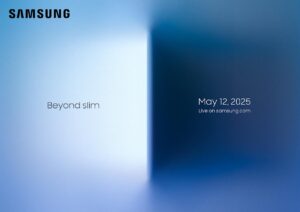
<span class=caption-credit> Sam Rutherford for Engadget</span>
Microsoft Surface Price Increase: 20% Jump Hits Surface Pro, Laptop, and Accessories
Microsoft’s Surface lineup faces significant price increases across most models. Photo credit: Sam Rutherford for Engadget
Microsoft has implemented a substantial 20 percent price increase across most of its Surface lineup, affecting both the Surface Laptop and Surface Pro series as well as accessories like power supplies. This price adjustment, first spotted by XDA, marks a significant shift in Microsoft’s hardware pricing strategy and follows closely behind the company’s recent Xbox console price hikes.
Table of Contents
Affected Surface Models and Price Changes
The price increases affect most of Microsoft’s existing Surface lineup, with base models seeing the most significant percentage jumps. Both the 13.8-inch Surface Laptop and the 13-inch Surface Pro have experienced identical price hikes, with their starting prices climbing from $1,000 to $1,200—representing a substantial 20 percent increase that pushes these devices firmly into premium pricing territory.
Interestingly, not all Surface devices faced the same pricing fate. The 15-inch Surface Laptop appears to be the lone exception, maintaining its original $1,300 price point. This selective approach to price increases suggests a strategic decision by Microsoft rather than a uniform adjustment across all product lines.
Surface Model Price Changes
| Surface Model | Previous Starting Price | New Starting Price | Increase |
|---|---|---|---|
| 13.8-inch Surface Laptop | $1,000 | $1,200 | +$200 (20%) |
| 13-inch Surface Pro | $1,000 | $1,200 | +$200 (20%) |
| 15-inch Surface Laptop | $1,300 | $1,300 | No change (0%) |
The timing of these price adjustments is particularly noteworthy as it coincides with Microsoft’s recent announcement of new Surface devices. The newly introduced models maintain the higher price points, which now appear more consistent with the adjusted pricing of existing devices. This suggests the price increases may have been planned in coordination with the launch of the new Surface lineup.
Accessories Face Even Steeper Increases
While the 20 percent increase for the main Surface devices is significant, accessories face even more dramatic price hikes. Power supplies, essential components for Surface owners, have seen particularly steep increases that exceed the percentage jumps applied to the devices themselves.
The 65W Surface power supply has jumped from $90 to $120, representing a 33 percent increase. Even more dramatically, the higher-capacity 127W variant has increased from $125 to $175—a substantial 40 percent price hike. These accessory price increases significantly raise the total cost of ownership for Surface devices, especially for users who need additional or replacement power supplies.
Power Supply Price Changes
- 65W Surface Power Supply: $90 → $120 (+33%)
- 127W Surface Power Supply: $125 → $175 (+40%)
If you need replacement or additional power supplies, consider purchasing them from retail partners still offering original pricing before these retailers update their pricing structures.
The substantial increases for accessories like power supplies follow a common strategy in the tech industry, where companies often apply higher percentage markups to accessories and peripherals than to primary devices. However, the magnitude of these increases exceeds typical adjustments, suggesting broader economic factors may be at play.
Retail Partners Still Offering Original Pricing
While Microsoft has implemented these price increases on its official website and direct sales channels, there’s a temporary reprieve for consumers. As PCMag has noted, major retail partners including Best Buy and Amazon are still showing the original prices for Surface devices and accessories.
This pricing disparity between Microsoft’s direct channels and retail partners creates a window of opportunity for consumers considering a Surface purchase. The delay in price adjustments at retail partners likely reflects pre-existing inventory agreements or slower update cycles for pricing information across retail channels.
Current Buying Opportunities
If you’ve been contemplating purchasing a Surface device, this temporary pricing discrepancy creates a strategic buying opportunity. Retailers like Best Buy and Amazon still offer the original pricing, potentially saving you up to $200 on base models and even more on higher-end configurations. This price advantage is likely temporary, as retail partners will eventually align their pricing with Microsoft’s new structure.
It remains unclear how long this pricing advantage at retail partners will last. Once these retailers exhaust their current inventory or update their pricing agreements with Microsoft, consumers can expect to see unified pricing across all purchasing channels reflecting the new higher price points.
Part of Microsoft’s Broader Price Adjustment Strategy
The Surface price increases don’t exist in isolation but appear to be part of a broader pricing adjustment strategy across Microsoft’s hardware portfolio. These changes follow closely behind significant price hikes for Xbox consoles announced just last week, suggesting a coordinated approach to hardware pricing across the company.
The Xbox Series X saw an $80 price increase, while the Xbox Series S now costs an additional $100—representing comparable percentage increases to those applied to the Surface lineup. This parallel timing indicates a company-wide reassessment of hardware pricing rather than isolated decisions for individual product categories.
| Microsoft Hardware | Previous Price | New Price | Increase |
|---|---|---|---|
| Surface Pro (13-inch) | $1,000 | $1,200 | +$200 (20%) |
| Surface Laptop (13.8-inch) | $1,000 | $1,200 | +$200 (20%) |
| Xbox Series X | $499 | $579 | +$80 (16%) |
| Xbox Series S | $299 | $399 | +$100 (33%) |
The combination of Surface and Xbox price increases points to larger economic considerations influencing Microsoft’s hardware strategy. The consistency in timing and magnitude suggests these adjustments were planned as part of a comprehensive review of Microsoft’s hardware pricing structure across its consumer device portfolio.
Potential Causes Behind the Price Increases
While Microsoft hasn’t officially explained the reasoning behind these price increases, several potential factors may be contributing to the company’s decision. Economic pressures, trade policies, and competitive positioning could all play a role in this significant pricing shift.
Notably, Microsoft has not explicitly connected these price hikes to President Trump’s recently implemented tariffs, which have affected various technology products and components. When questioned about the surprisingly expensive entry-level Surface models introduced this week, Microsoft representatives neither confirmed nor denied any connection to these tariffs.
Possible Factors Behind Price Increases
- Trade Tariffs: Recent changes in trade policies could be directly impacting manufacturing and import costs
- Component Shortages: Ongoing challenges in semiconductor and component supply chains
- Inflation Pressures: Broader economic inflation affecting manufacturing and operational costs
- Currency Fluctuations: Changes in exchange rates affecting global pricing strategies
- Strategic Repositioning: Potential effort to reposition Surface products in the premium device market
The silence from Microsoft regarding specific causes for the price increases leaves room for speculation, but the magnitude and timing suggest multiple factors likely influenced this decision. The company’s approach follows similar price adjustments from other technology manufacturers responding to changing economic conditions.
Impact on Consumers and Buying Recommendations
These price increases have significant implications for consumers considering Microsoft Surface products. The 20 percent jump for base models pushes entry-level Surface devices further into premium territory, potentially affecting their competitiveness in the broader PC market, particularly against Apple’s MacBook Air and various Windows alternatives from manufacturers like Dell, HP, and Lenovo.
For consumers set on purchasing Surface devices, strategic timing becomes important. The current window where retail partners still offer original pricing provides a meaningful opportunity to save. However, this advantage is likely temporary, as retailers will eventually align with Microsoft’s new pricing structure.
Recommendations for Potential Surface Buyers
- Check Retail Partners First: Best Buy, Amazon, and other retailers still offer original pricing as of this writing
- Consider Previous Generation Models: Earlier Surface models may offer better value while still providing excellent performance
- Bundle Purchases: If you need accessories, purchase them together with devices while retail discounts remain available
- Evaluate Alternatives: Compare the new pricing against competing products from other manufacturers
- Watch for Sales Events: Major shopping events may offer temporary relief from the new higher pricing
While the price increases make Surface devices less accessible at entry-level price points, they remain competitive products in the premium PC market. Consumers will need to evaluate whether the distinctive features of Surface products—including their design, build quality, and integration with Microsoft’s ecosystem—justify the higher prices relative to alternatives.
As technology companies continue to adjust pricing in response to economic pressures, consumers may need to recalibrate their expectations regarding device costs across the industry. Microsoft’s price increases may signal a broader trend rather than an isolated change, potentially foreshadowing similar adjustments from other manufacturers facing the same economic conditions.
Published: May 8, 2025





